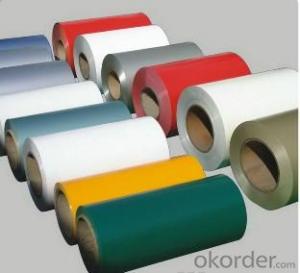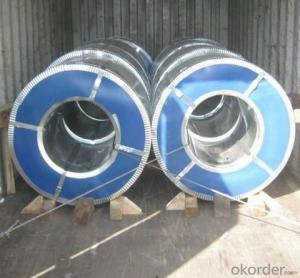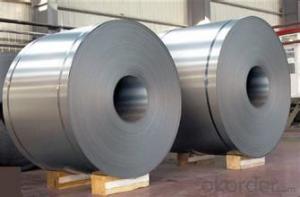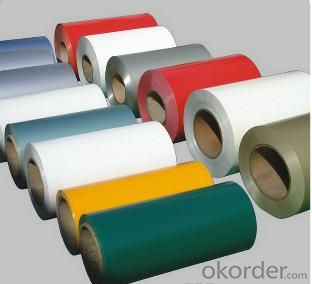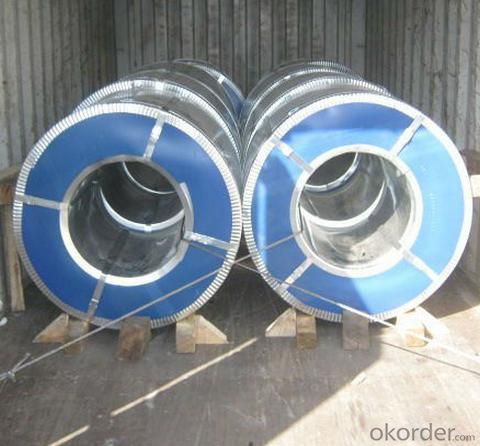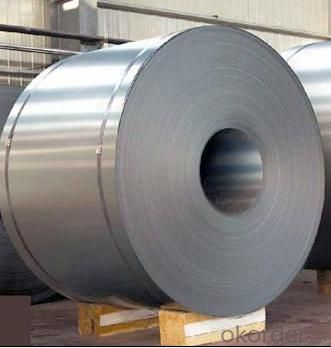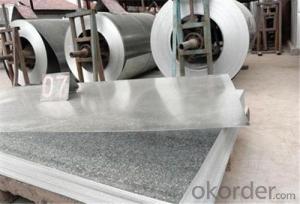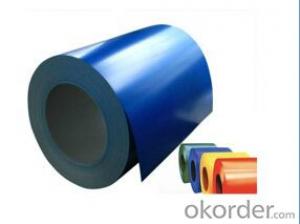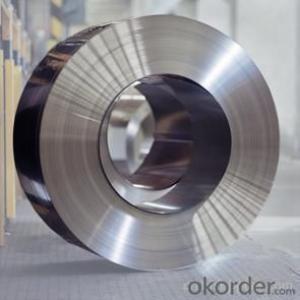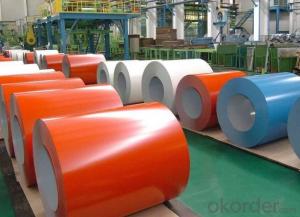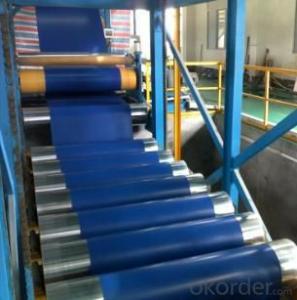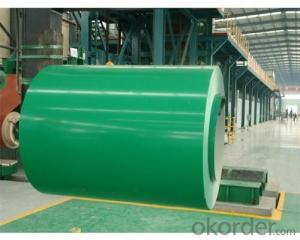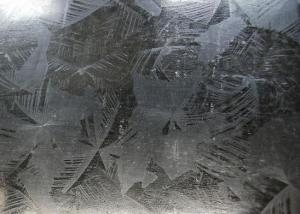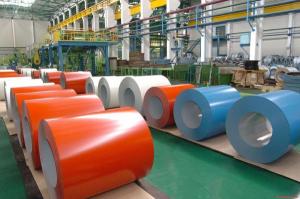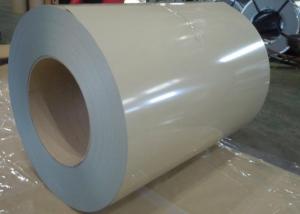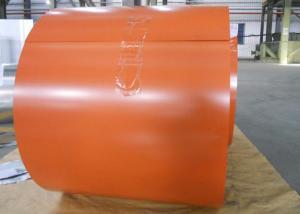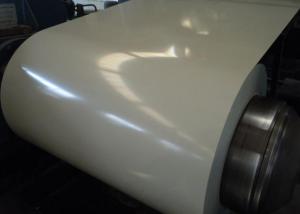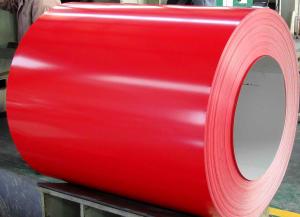Colored Coated Galvalume Steel Coils for Building
- Loading Port:
- Shanghai
- Payment Terms:
- TT OR LC
- Min Order Qty:
- 25 m.t.
- Supply Capability:
- 10000 m.t./month
OKorder Service Pledge
OKorder Financial Service
You Might Also Like
| Standard: | AISI,ASTM,GB,JIS | Grade: | CGCC CGCH | Thickness: | 0.17-0.6mm |
| Place of Origin: | China (Mainland) | Brand Name: | Model Number: | GL-001 | |
| Type: | Steel Coil | Technique: | Cold Rolled | Surface Treatment: | Coated |
| Application: | Container Plate | Special Use: | High-strength Steel Plate | Width: | 750-1250mm |
| Length: | C | certificate: | SGS,BV,ISO | usage: | building roofing material |
| coil weight: | 3-7 ton | coil ID: | 508mm | base metal: | hot rolled steel coil |
Packaging & Delivery
| Packaging Detail: | mills standard export seaworthy packing or according to the customers' requirements |
| Delivery Detail: | 30days |
Galvalume Steel Coils/Coil
Product advantages:
A.high strength
B.strong soundess
C.well rainproof performance
D.continuous rolling
E.good corrosion resistance
F.easy to install and remove
Quality guarantee:
our company attaches importance to quality management and assurance,it is equipped with sound testing means and has passed the certification of ISO9001 Quality Management System and SGS,BV verification
Deiverse products
With world high-quality galvanized,aluminum and zinc coated and cold-rolled steel coils as base materials.
- Q: How are steel coils coated or painted?
- Steel coils are typically coated or painted using a process called coil coating. In this process, the steel coil is cleaned, treated, and primed before being coated with a layer of paint or a protective coating. This is usually achieved through a continuous automated line, where the coil is unwound, cleaned, coated using various methods such as roller coating or spraying, and then cured to ensure adhesion and durability of the coating. This process allows for efficient and uniform coating application, providing the steel coils with enhanced corrosion resistance and aesthetic appeal.
- Q: Can cold rolled galvanized steel coils be acid washed after oxidation?
- Hot rolling is made of slabs (mainly continuous billets) as raw materials. After heating, strips are made from roughing mills and finishing mills. From the last finishing mill stand out of the hot strip laminar cooling through to the set temperature, the coiling machine rolled strip steel roll cooled, according to the different needs of users with different finishing line (flat, straightening, transverse or longitudinal, inspection, weighing, packing and marking etc.) processing and become steel, flat steel product volume and slitting.
- Q: i know that steel helmets werent meant to stop bullets, but i was wondering do they have an value whatsoever for stopping bullets, or is that just yet another thing that hollywood made up(like the omaha beach scene in saving private rian)
- Steel helmets were made to stop shrapnel; steel fragments from artillery bursts. They were never meant to stop bullets and most modern rifle rounds will penetrate a steel helmet with ease. The US went to Kevlar helmets for lighter weight and better ballistic protection. Some helmets will deflect handgun rounds. Over half of combat injuries were caused by artillery, so the thinking was to reduce head injuries from shrapnel.
- Q: What are the common coil surface finish standards?
- The common coil surface finish standards include mill finish, brushed finish, mirror finish, and embossed finish.
- Q: I am making a sword of 1060 carbon steel and would like to know how to heat treat it once it's ready, could anyone help please?
- I've okorder for back and forth communication. I could type up some lengthy post, you'd read it and be like I don't have that piece of gear and all my time is wasted.
- Q: How are steel coils processed for edge trimming or slitting during processing?
- Steel coils are processed for edge trimming or slitting during processing by using specialized machinery. The coils are uncoiled and fed through a slitting machine, which cuts the coil into narrower strips. These strips are then passed through an edge trimming machine, which removes any irregularities or excess material from the edges. This process helps to ensure that the steel coils meet the desired specifications and are ready for further processing or use in various industries.
- Q: What are the different surface finishes of steel coils?
- The different surface finishes of steel coils include mill finish, galvanized finish, painted finish, and coated finish.
- Q: I know the law regarding selling steel core ammo, but is it possible to buy a steel core bullet and load it yourself?
- Please okorder / You're likely to find steel core ammunition from any of those manufacturers, and many more. Have fun... but steel core ammo is no more effective than lead ammunition, unless you're planning a crime spree and want to attempt to punch through a ballistic vest, and even that's not guaranteed.
- Q: What is the process of uncoiling a steel coil?
- The process of uncoiling a steel coil involves feeding the coil into a machine called a decoiler. The decoiler holds the coil and gradually unrolls it, allowing the steel to be straightened and fed into downstream manufacturing processes. This is typically done by using a combination of motorized rollers and tension control systems to ensure a controlled and smooth uncoiling process.
- Q: I have a knife with 154cm steel on it and I always here that you should put oil on it to keep it from rusting but I am just wondering what kind of oil? And how do I apply it and do I just leave it on there?
- It's stainless steel so it doesn't really need to be oiled. Anything will do for oil if you want to wipe it down. Just put a little on a paper towel and give it a once-over.
Send your message to us
Colored Coated Galvalume Steel Coils for Building
- Loading Port:
- Shanghai
- Payment Terms:
- TT OR LC
- Min Order Qty:
- 25 m.t.
- Supply Capability:
- 10000 m.t./month
OKorder Service Pledge
OKorder Financial Service
Similar products
Hot products
Hot Searches
Related keywords
